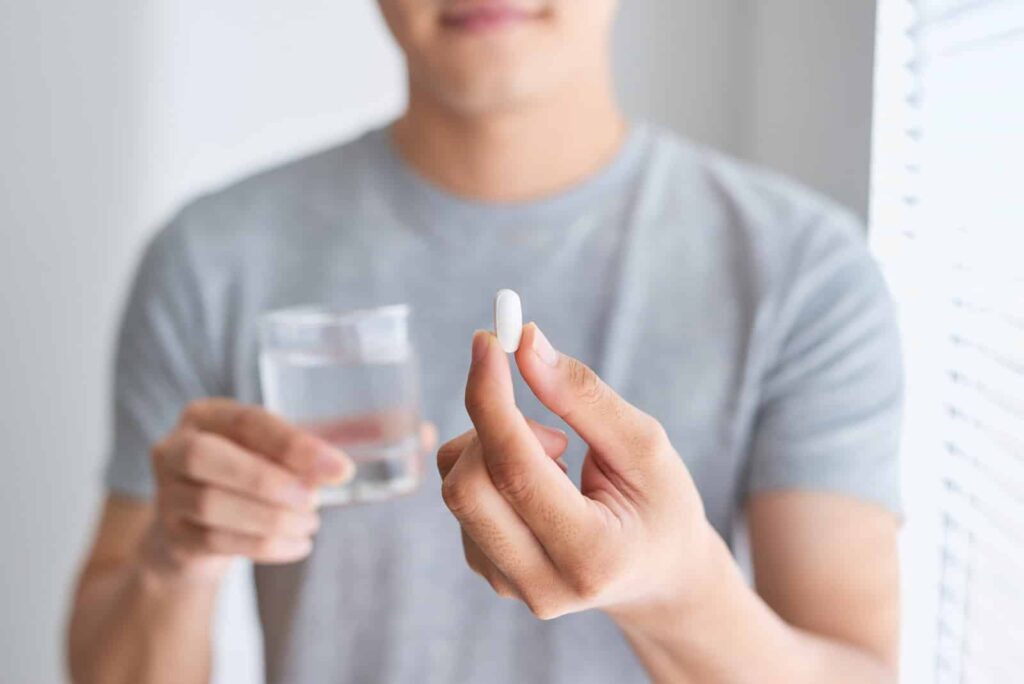How long does hydrocodone stay in your system? The duration hydrocodone can remain in one’s system varies by individual, influenced by several factors. Given its powerful effects and high risk of addiction, understanding its presence in the body is vital for those managing pain, healthcare professionals, and individuals in detox.
Serenity Grove, located in Athens, Georgia, provides specialized support for those recovering from prescription drug addiction, offering insights into its effects, withdrawal, and treatment options. Call us today at (844)904-3485 to begin treatment.
How Hydrocodone Works
Hydrocodone (brand names include: Lortab or Vicodin) is the most frequently used opioid in the U.S. However, hydrocodone also has a significant abuse potential. It treats chronic pain by activating opioid receptors. These receptors inhibit the transmission of pain signals in the brain and simultaneously stimulate the reward center, leading to effects like euphoria, stress reduction, drowsiness, and numbness.
Hydrocodone is taken orally and must pass through the digestive system. Typically, it provides pain relief within about an hour, with peak levels reached around 1.3 hours post-ingestion. Individuals with a tolerance to the drug may experience delayed effects or find that a single dose is less effective. With continued use, the brain adjusts its functions to accommodate the drug, leading to dysfunction without it and withdrawal symptoms upon cessation.
These symptoms signal a dependence, indicating the body’s inability to function normally without hydrocodone. The drug works by binding to mu-opioid receptors in the brain, which regulate pain and reward by reducing pain perception and triggering dopamine release, enhancing feelings of pleasure. This effective pain relief mechanism, however, also heightens the risk of addiction.
How Long Does Hydrocodone Last?
The time hydrocodone remains in your body varies based on factors like metabolism, age, body mass, hydration levels, and overall health. Typically, its half-life is around 3.8 to 4 hours in healthy adults. This means that it takes about this time for half of the drug to be eliminated. However, hydrocodone detection times in bodily fluids are longer:
- Urine: Detectable for 2 to 4 days.
- Blood: Up to 24 hours.
- Saliva: Up to 36 hours.
- Hair: Up to 90 days.
Understanding these timelines is vital for medical supervision or addiction treatment programs. Factors influencing the elimination of hydrocodone include:
- Age: Younger people generally process toxins faster due to more efficient organ systems.
- Metabolism: A faster metabolism speeds up the elimination of substances.
- Body Composition: Body fat and overall weight affect how your body processes hydrocodone; higher doses relative to body composition can prolong elimination.
- Genetics: These influence how hydrocodone is metabolized and an individual’s susceptibility to addiction.
- Organ Function: Healthy kidneys and liver are crucial for processing and eliminating substances; any impairment can delay this process.
- Usage Frequency: Longer-term users will likely find the drug lingers longer in their system compared to occasional users.
Awareness of how long hydrocodone stays in the system is important for managing withdrawal and treatment timelines.
More: How Long Do Opioids Stay in Your System?
Hydrocodone Withdrawal
Withdrawing from hydrocodone can be a challenging and uncomfortable experience, starting within a few hours of the last dose. Early symptoms, such as muscle aches, sweating, and agitation, may worsen to include severe issues like stomach cramps, diarrhea, depression, and potentially more dangerous effects like seizures or blood pressure spikes.
The severity of withdrawal symptoms often correlates with the length and intensity of hydrocodone use. Supervised medical care is crucial for safely managing these symptoms and effectively overcoming dependency.
Medically supervised opioid detox, along with inpatient or outpatient treatment programs, is best for those addicted to hydrocodone. Symptoms typically start to improve after 72 hours and significantly lessen within a week.
Despite its efficacy in pain relief, hydrocodone is highly addictive. It is vital to follow your doctor’s instructions precisely and maintain open communication with your healthcare provider while on this medication to mitigate potential negative side effects and prevent dependency.
Hydrocodone Addiction Treatment Programs
At Serenity Grove, we offer specialized treatment programs designed to address the unique challenges of hydrocodone addiction, as well as, other types of opioid addictions. Our approach includes:
- Medically Assisted Detox: This provides safe management of withdrawal symptoms under medical supervision.
- Behavioral Therapies: We utilize techniques like Cognitive Behavioral Therapy (CBT) to alter drug-use behaviors and effectively handle triggers and stress.
- Support Groups: These groups offer a supportive community that understands the recovery challenges and provides encouragement.
Each treatment plan meets the specific needs and circumstances of the individual to optimize recovery outcomes. For anyone dealing with hydrocodone addiction, accessing the right treatment, such as medically-assisted detox and appropriate in-patient or out-patient care, is crucial.
Contact Us For Support
For those seeking assistance, understanding how long hydrocodone stays in your system is just the beginning. At Serenity Grove, we’re committed to providing the support and resources necessary to navigate this complex path to recovery. If you or someone you know is struggling with hydrocodone addiction, we’re here to help. Our team of experts in Athens, Georgia, is dedicated to providing the support and care needed to move towards recovery.
Contact us today to learn more about our programs and how we can help you or your loved one take the first step towards a healthier, drug-free life. Recovery is a journey, and you don’t have to do it alone.


